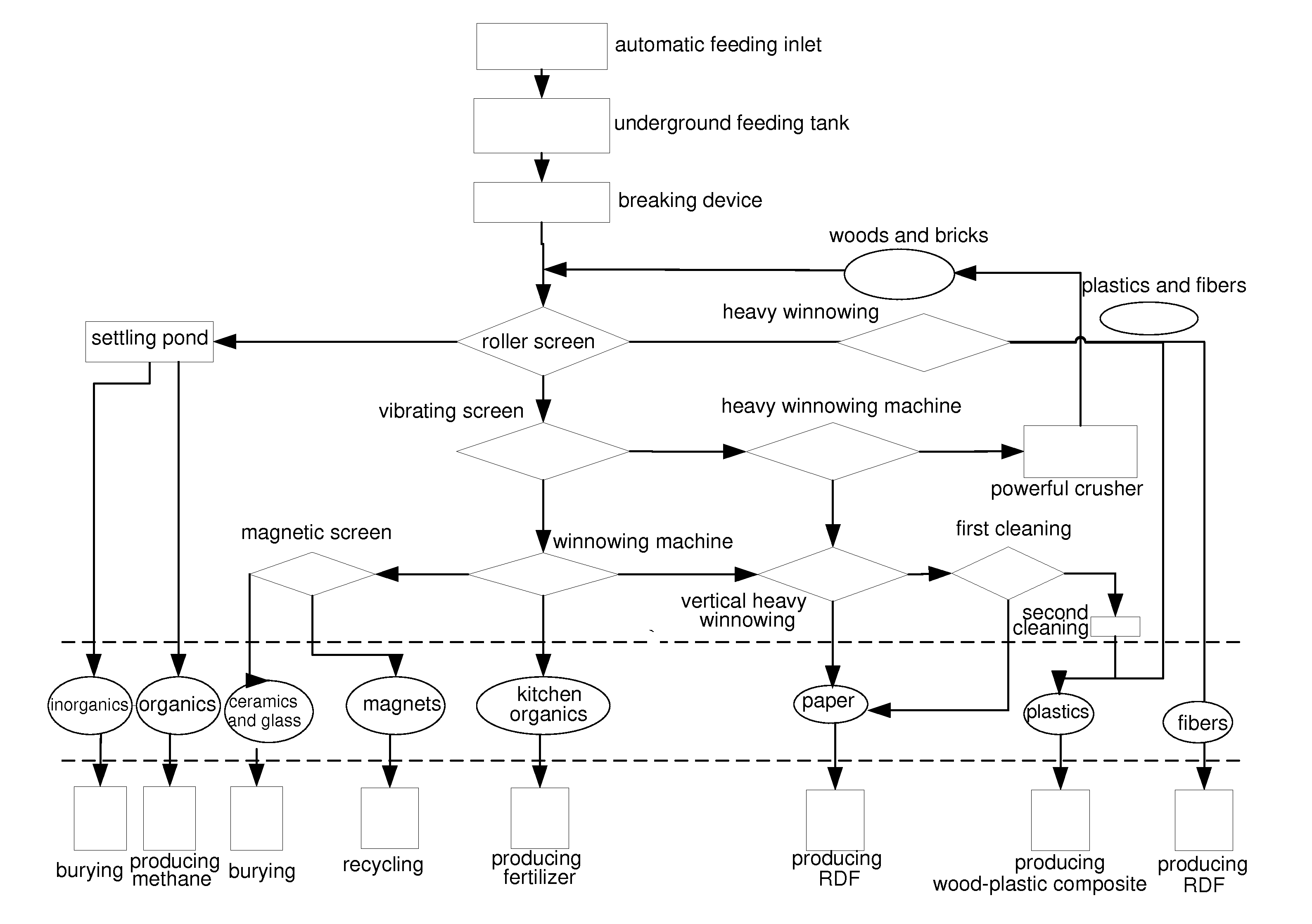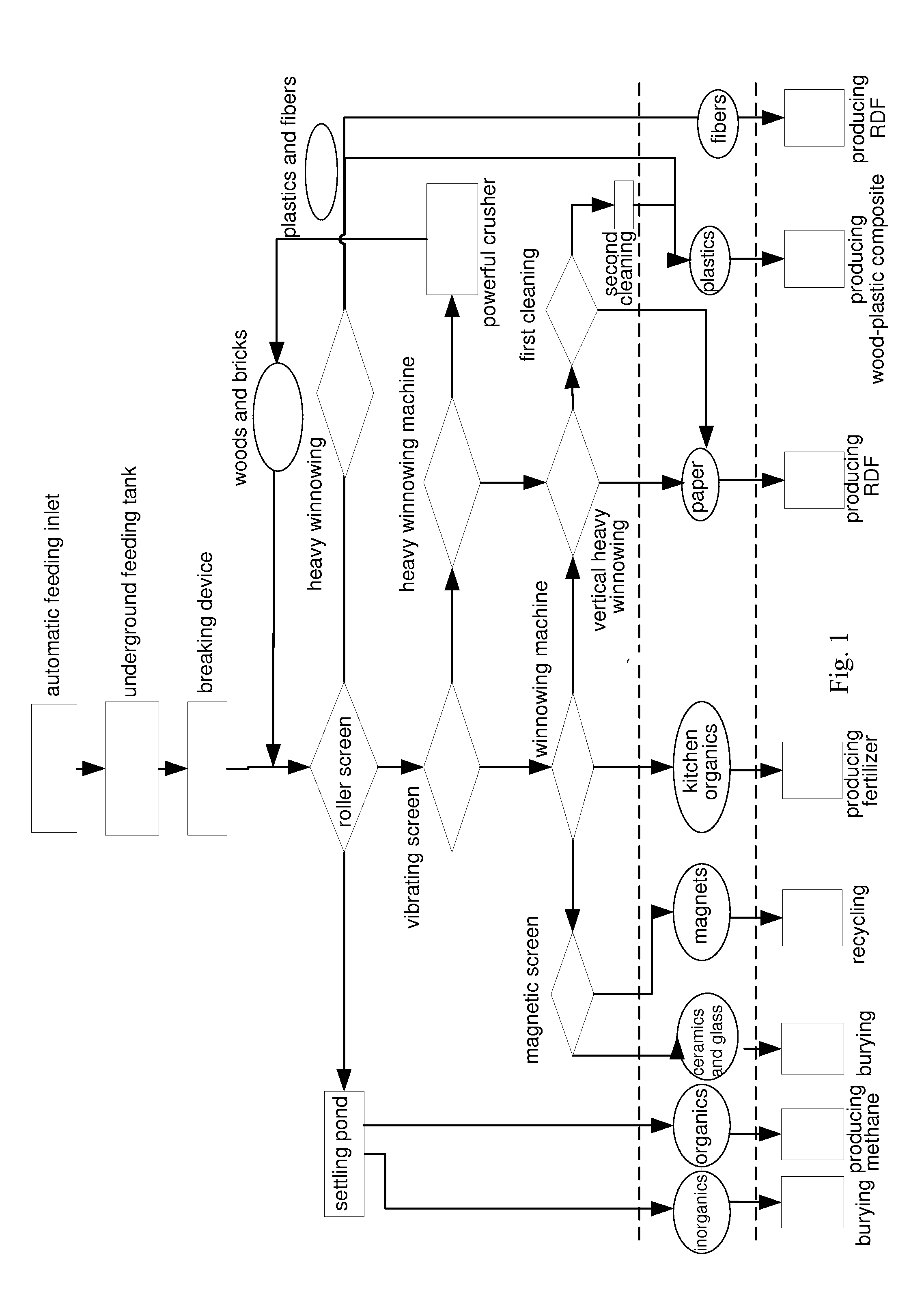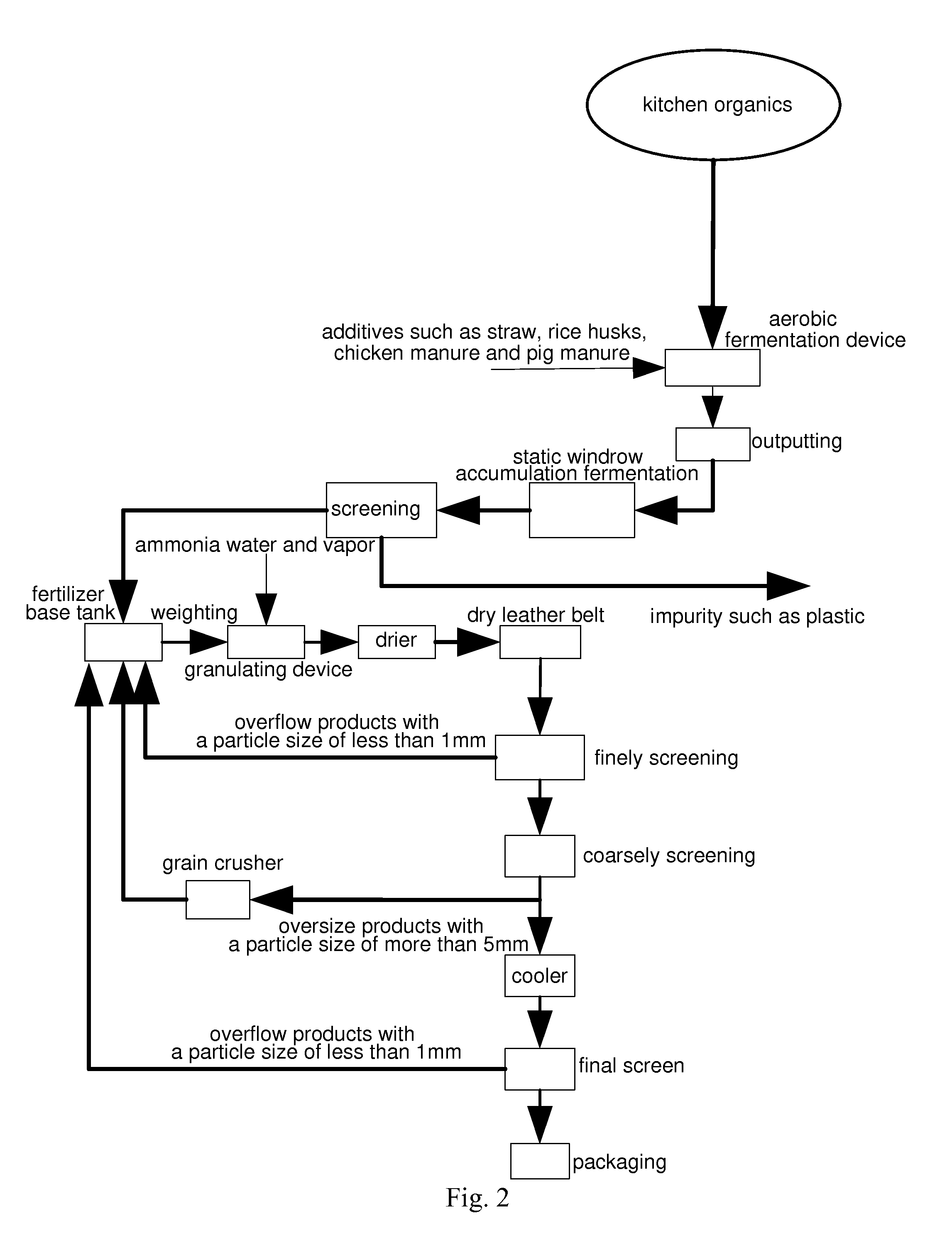Method for sorting and comprehensively utilizing municipal solid waste
a technology of municipal solid waste and comprehensive utilization, applied in the direction of wet separation, fertiliser form, raw material division, etc., to achieve the effect of maximizing the utilization of resources
- Summary
- Abstract
- Description
- Claims
- Application Information
AI Technical Summary
Benefits of technology
Problems solved by technology
Method used
Image
Examples
Embodiment Construction
[0070]Referring to the drawings, the present invention is further illustrated. Referring to FIG. 1, a method for sorting and comprehensively utilizing municipal solid waste, comprising steps of: transporting urban domestic refuse to a comprehensive refuse treatment site by a municipal transportation vehicle, feeding the refuse into a feeding tank through a feeding inlet, wherein the feeding tank collects refuse leachate and has an automatic outputting function; then outputting the municipal solid waste into a breaking device through an automatic feeding outlet of the feeding tank;
[0071]breaking refuse bags and large blocks by the breaking device; transporting broken refuse into a two-stage roller screen for screening, wherein dusts with a particle size of less than 3 mm are screened out, and strips are hung, the strips comprise fibers and strip-like plastics; then separating the fibers from the plastics by heavy winnowing, wherein the fibers are for producing refuse derived fuel (RD...
PUM
| Property | Measurement | Unit |
|---|---|---|
| Temperature | aaaaa | aaaaa |
| Temperature | aaaaa | aaaaa |
| Temperature | aaaaa | aaaaa |
Abstract
Description
Claims
Application Information
 Login to View More
Login to View More - R&D
- Intellectual Property
- Life Sciences
- Materials
- Tech Scout
- Unparalleled Data Quality
- Higher Quality Content
- 60% Fewer Hallucinations
Browse by: Latest US Patents, China's latest patents, Technical Efficacy Thesaurus, Application Domain, Technology Topic, Popular Technical Reports.
© 2025 PatSnap. All rights reserved.Legal|Privacy policy|Modern Slavery Act Transparency Statement|Sitemap|About US| Contact US: help@patsnap.com



